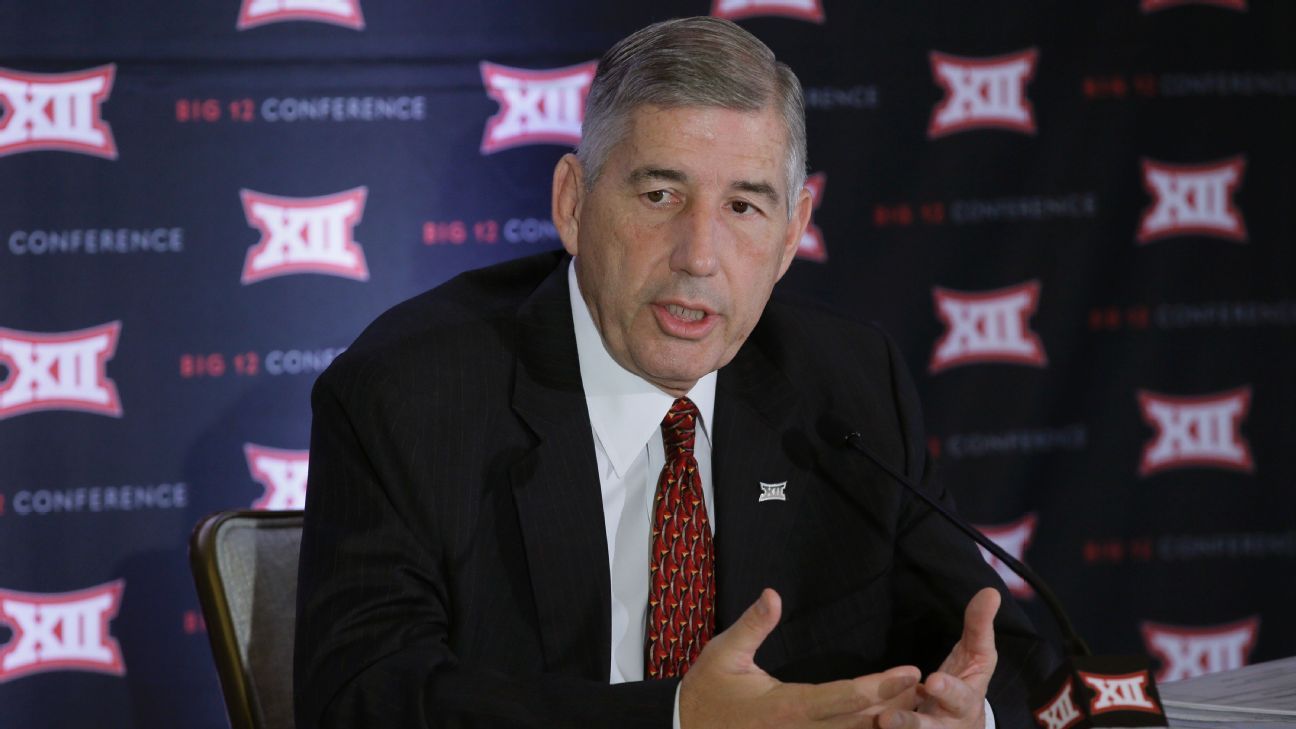ORLANDO, Fla. — Amid growing discussion about the transfer portal, waiver process and debates over whether all transfers should gain immediate eligibility at their new schools, Big 12 commissioner Bob Bowlsby said Tuesday he believes all student-athletes who want to transfer should sit out one year, with no exceptions.
Bowlsby spoke on a commissioner’s panel with SEC commissioner Greg Sankey and ACC commissioner John Swofford at the annual National Association of Collegiate Directors of Athletics convention. When the transfer portal topic came up, Bowlsby said he thought it was a “colossal mistake” for the NCAA to set different transfer guidelines for different sports.
Football, men’s and women’s basketball, baseball and men’s ice hockey transfers must sit out one year unless they apply to the NCAA for and are granted a waiver for immediate eligibility. Meanwhile, student-athletes in all other sports are allowed immediate eligibility without penalty, provided they only transfer once.
“There’s a foundational mistake in all this that we ought to seek to fix,” Bowlsby told the assembled group, adding if he was a “benevolent dictator” he would enact a rule that would make all transfers sit out one year.
“There’s a rule that treats different sports different ways and we should have had a rule that treated all the sports the same way,” Bowlsby told ESPN after the panel ended. “We would have been much better off if there was always a transfer residence requirement in all sports. Everyone sits out and gets acclimated and then have a chance to get a year back by graduating.”
Much of the recent debate about transfers has centered on empowering student-athletes in their decisions to transfer, and that is a big reason why the transfer portal was created. Any student-athlete seeking a transfer puts their name in the portal to let prospective institutions know they are interested in changing schools. Part of that discussion has centered on whether all student-athletes should gain immediate eligibility, especially as high-profile waivers have been granted over the past year.
Bowlsby said he has not brought up his ideas at meetings on the topic, and he’s not necessarily pushing for change — but he believes it must be considered.
“The problem is, what’s a good rule for some is not a good rule for all when you have 350 institutions in Division I that are all trying to do what’s best for their institutions,” Bowlsby said. “It’s very difficult, if not impossible, to come up with a plan that is mutually impactful and favorable for everyone. What’s a great rule for 100 schools is a terrible rule for the other 250, so the viability of those kinds of ideas — it’s a big change, but I think that’s where change has to start. We have to think about it at its foundation and design something that works better than what we have.”
Swofford said he believed the transfer portal was working well, but there is a need to find a sweet spot between roster management for coaches and empowering student-athletes to make decisions that are best for them. He wasn’t sure a blanket rule requiring everyone to sit out a year was the best option.
“I’m not sure, in the whole scheme of things, we should eliminate the opportunity for unique situations to be addressed,” Swofford told ESPN. “But if you’re going to do that, it needs to be … the outcomes of those exceptions need to be consistent, and that’s the trick. If it can’t be consistent, then maybe in my opinion we do fall back to one year across the board because it is academically sound. But I’d hate to see unique circumstances totally eliminated from the discussion when they’re merited, but that puts a lot of pressure on the system to be consistent year to year.”
Bowlsby believes requiring everyone to sit out a year would end up decreasing the number of student-athletes looking to transfer.
“You’d still have transfers, but you’d have transfers that are less purely for athletic reasons and I think it would be more difficult to transfer,” Bowlsby said. “People would think hard about whether they wanted to transfer if they had to sit out a year. They would think about whether or not they were planning to graduate and, in doing so, get their year back. I think it would cause them to think more about their initial choice of schools at the outset. I think all those are good things.”
